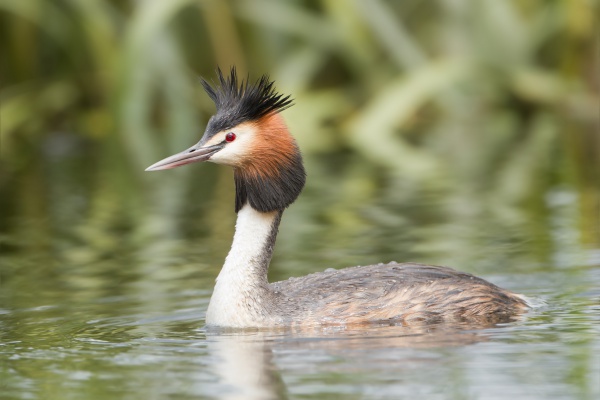Facts About Great crested grebe
The great crested grebe is a captivating water bird renowned for its elaborate courtship dance. It is the largest member of the grebe family in the Old World and is an adept swimmer and diver, effortlessly catching fish underwater. In the summer, adult grebes showcase striking head and neck plumage, while juveniles display charming black and white striped heads. They breed in freshwater lakes abundant in vegetation and perform intricate courtship rituals.
The great crested grebe is distributed across Europe, the Palearctic region, Africa, and Australasia. Some populations are sedentary, while others migrate seasonally. For nesting, they lay their eggs near the water's edge. After hatching, the chicks are often seen riding on their parents' backs. The adults then instruct their young in swimming and diving through demonstration.
Fish constitute the primary diet of the great crested grebe, but they also consume small crustaceans, insects, frogs, and newts. In the 19th century, their population in the UK nearly plummeted due to hunting for their decorative head plumes. Fortunately, conservation efforts, including the establishment of the Royal Society for the Protection of Birds, have facilitated a significant population recovery.
The behavior of the great crested grebe was meticulously documented by Julian Huxley in his 1914 paper, "The Courtship-habits of the Great Crested Grebe (Podiceps cristatus)." This work has become a foundational study in the field of ornithology.

 Portugal
Portugal